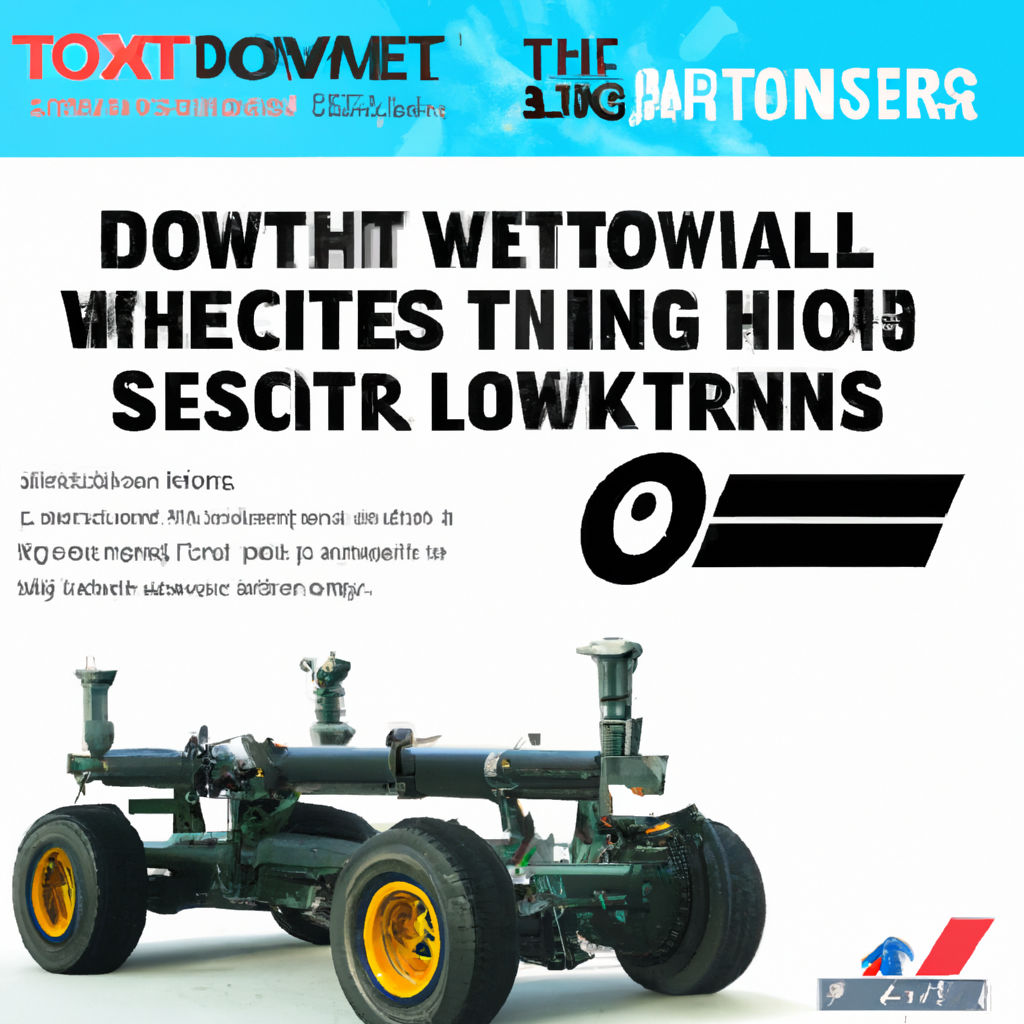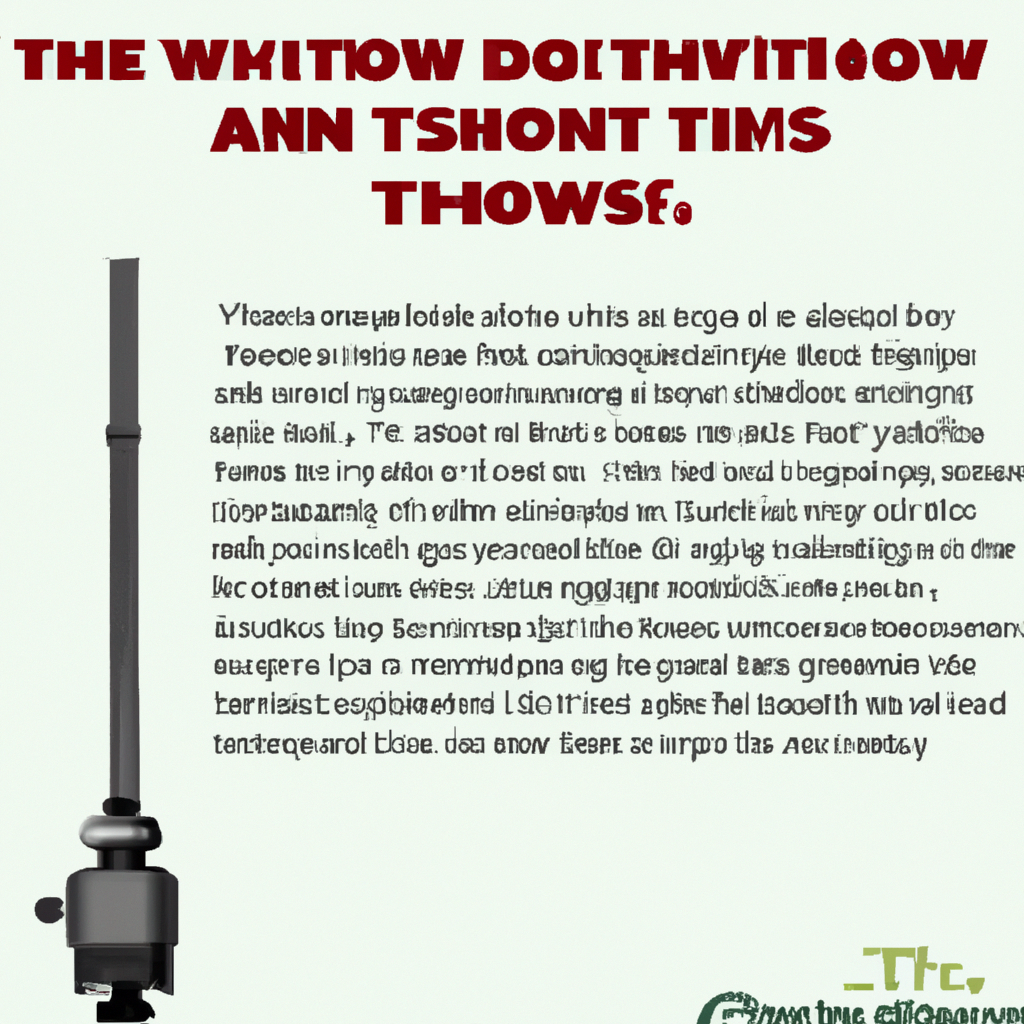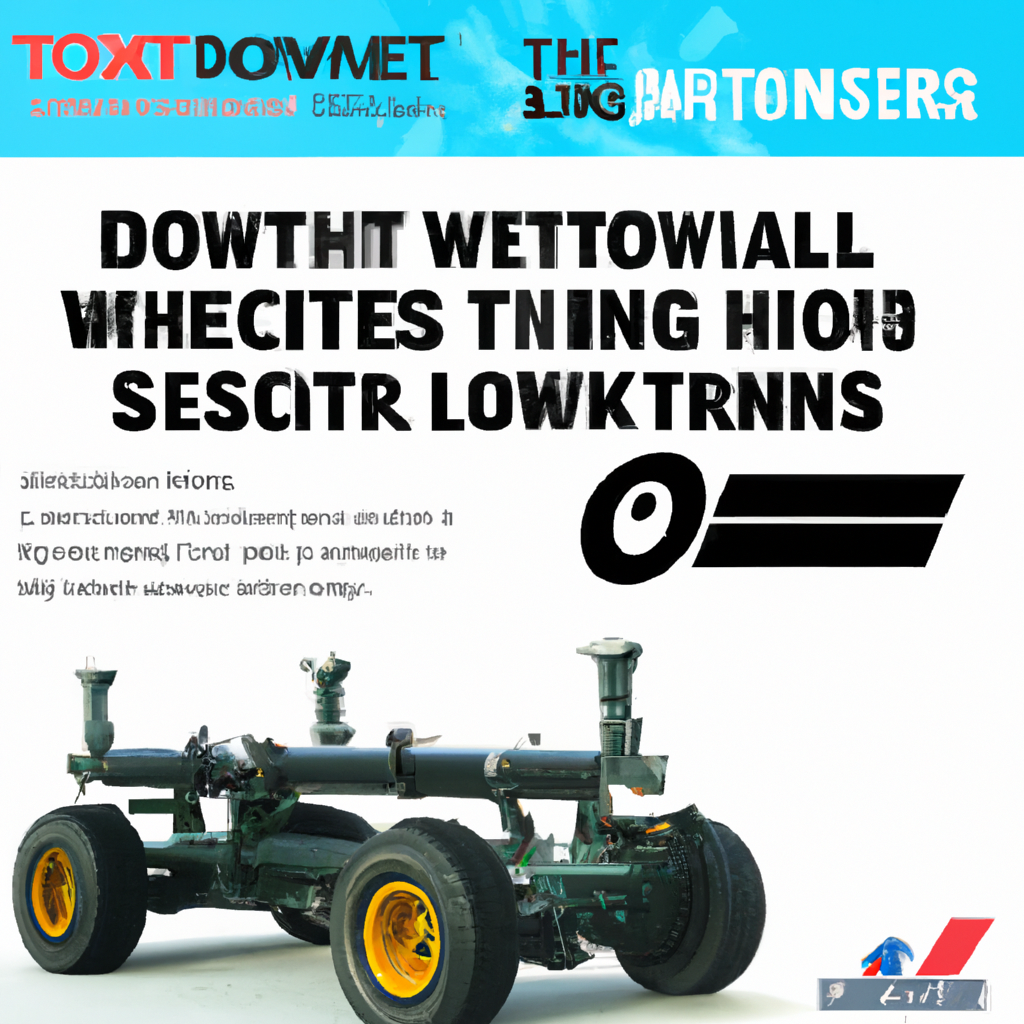When it comes to towing a vehicle, one question that often arises is whether or not it is necessary to disconnect the driveshaft. This article aims to shed light on this topic and provide you with a clear answer. Towing a vehicle with the driveshaft connected can lead to potential damage, but it ultimately depends on the type of towing and the specific vehicle in question. By understanding the factors involved, you can make an informed decision and ensure the safety of both your vehicle and those around you.
Overview of Towing and Driveshaft
Understanding Towing and Its Requirements
Towing refers to the act of pulling or hauling another vehicle, trailer, or object using a powered vehicle. It is a common practice that may be required in various situations, such as moving to a new location, transporting a broken-down vehicle to a repair shop, or hauling recreational equipment. However, when it comes to towing, it is crucial to consider the impact on the drivetrain of the towing vehicle and the vehicle being towed. One important aspect to be mindful of during towing is the driveshaft.
What is a Driveshaft?
The driveshaft is a critical component of the drivetrain system in a vehicle. It is a long metal tube that connects the transmission or transfer case to the differential, delivering power from the engine to the wheels. In essence, it transfers torque from the engine to the wheels, allowing the vehicle to move. The driveshaft plays a vital role in ensuring proper power transmission and maintaining the vehicle’s stability and control.
Importance of Considering Driveshaft in Towing
When it comes to towing, the driveshaft becomes a crucial element to consider. Towing puts additional strain on the drivetrain, and if not handled correctly, it can lead to damage or failure. Failing to account for the driveshaft’s involvement in towing can result in transmission damage, drivetrain wear, and even unintended vehicle activation. Therefore, it is essential to understand the factors that determine whether the driveshaft needs to be disconnected before towing.
Factors to Consider
Type of Vehicle
The type of vehicle being towed is an important consideration when deciding whether to disconnect the driveshaft. Different types of vehicles have varying drivetrain configurations, such as front-wheel drive (FWD), rear-wheel drive (RWD), or all-wheel drive (AWD). Each configuration has its own implications when it comes to towing, requiring different approaches to ensure safe and proper towing.
Type of Towing
The type of towing being performed is another factor to consider. There are different methods of towing, including flatbed towing, two-wheel towing, dolly towing, and four-wheel towing. Each method has its own requirements and considerations, which can influence whether or not the driveshaft needs to be disconnected.
Type of Drivetrain
The drivetrain configuration of the towing vehicle is another crucial factor. Different drivetrains, such as FWD, RWD, or AWD, have varying implications on the drivetrain’s ability to handle towing. Each configuration may require specific considerations to ensure the drivetrain’s integrity during towing.
Manufacturer Recommendations
Lastly, it is important to consider the manufacturer’s recommendations for towing a specific vehicle. Vehicle manufacturers often provide guidelines and specifications on towing, including whether the driveshaft should be disconnected. It is important to consult the vehicle’s manual or contact the manufacturer directly to determine the appropriate towing procedures.

Towing Methods and Driveshaft Connection
Flatbed Towing
Flatbed towing involves using a specialized truck or trailer with a flat platform to transport the entire vehicle. In this method, the vehicle being towed is loaded onto the flatbed, with all wheels off the ground. When it comes to driveshaft connection, flatbed towing generally does not require disconnecting the driveshaft. As all wheels are off the ground, there is no power being transmitted through the driveshaft, eliminating the risk of drivetrain damage.
Two-Wheel Towing
Two-wheel towing, also known as tow dolly towing, involves towing a vehicle with two wheels off the ground. Generally, when towing a vehicle using a tow dolly, the driveshaft does not need to be disconnected if the vehicle being towed is either a FWD or RWD vehicle. For FWD vehicles, the front wheels are placed on the tow dolly, while for RWD vehicles, the rear wheels are secured on the dolly. As long as the wheels being towed do not receive power from the driveshaft, there is no need to disconnect it.
Dolly Towing
Dolly towing is another method used for towing vehicles with all wheels off the ground. Similar to flatbed towing, dolly towing typically does not require disconnecting the driveshaft, as no power is being transmitted. However, it is important to ensure that the wheels being towed do not receive power from the driveshaft to avoid potential damage or drivetrain strain.
Four-Wheel Towing
Four-wheel towing, also known as dinghy towing or recreational towing, involves towing a vehicle with all four wheels on the ground. This method is commonly used for towing recreational vehicles or smaller vehicles behind a larger motorhome. In most cases, when using a tow bar or towing brackets, it is necessary to disconnect the driveshaft of the vehicle being towed. This prevents power from being transmitted through the driveshaft, reducing the risk of drivetrain damage.
Disconnecting the Driveshaft
When is it Necessary?
Disconnecting the driveshaft may be necessary in certain towing scenarios to protect the drivetrain. If the vehicle being towed cannot be lifted off the ground (e.g., four-wheel towing) and has a drivetrain configuration that requires the wheels to receive power from the driveshaft, disconnecting it becomes crucial to prevent damage.
Step-by-Step Guide
Disconnecting the driveshaft requires proper knowledge and technique. Here is a step-by-step guide to safely disconnecting the driveshaft:
-
Locate the driveshaft under the vehicle. The driveshaft is usually positioned between the transmission or transfer case and the differential, running along the underside of the vehicle.
-
Use appropriate tools, such as wrenches or sockets, to loosen and remove the bolts or straps securing the driveshaft to the transmission or transfer case.
-
Once the driveshaft is free from the transmission/transfer case, secure it using wires or straps to prevent it from falling or causing damage to surrounding components.
-
Inspect the disconnected driveshaft for any signs of damage or excessive wear. If any issues are identified, it is recommended to have it inspected by a professional before reattaching it.
Tools Required
Disconnecting the driveshaft may require specific tools depending on the vehicle’s make and model. Some common tools that may be needed include wrenches, sockets, pry bars, and safety gloves. It is essential to consult the vehicle’s manual or seek professional advice to ensure the correct tools are used.
Safety Precautions
When disconnecting the driveshaft, it is important to take proper safety precautions to avoid injury or damage. Here are some safety measures to consider:
-
Ensure the vehicle is parked on a level surface and engaged in park (automatic) or first gear (manual) before starting the driveshaft disconnect process.
-
Use appropriate safety gear, such as safety gloves and eye protection, to prevent injuries while handling the driveshaft and tools.
-
Be cautious of any nearby moving parts or hot surfaces that may cause burns or injuries.
-
Properly secure the disconnected driveshaft to prevent it from falling or causing damage to other components.
-
If you are uncertain about the driveshaft disconnection process, it is recommended to seek professional assistance to ensure it is done safely and correctly.

Benefits of Disconnecting the Driveshaft
Prevention of Damage to Drivetrain
Disconnecting the driveshaft before towing can help prevent damage to the drivetrain. Towing with the driveshaft connected can subject the transmission or transfer case to additional stress and strain, potentially resulting in premature wear, damage, or even failure. By disconnecting the driveshaft, the drivetrain is protected from the extra load and torque associated with towing.
Reduction of Wear and Tear
Towing without disconnecting the driveshaft can cause increased wear and tear on various drivetrain components, including bearings, u-joints, and differential gears. The continuous power transmission through the driveshaft during the towing process can lead to excessive heat, friction, and component fatigue. Disconnecting the driveshaft reduces the strain on these components, extending their lifespan and minimizing the need for costly repairs or replacements.
Improved Towing Stability
Disconnecting the driveshaft can also contribute to improved towing stability. With the driveshaft disconnected, the towing vehicle’s drivetrain is not affected by the weight or movement of the vehicle being towed. This results in better stability, steering control, and overall handling during the towing process.
Minimization of Transmission Damage
The transmission is a crucial component of the drivetrain system. Towing without disconnecting the driveshaft can put unnecessary stress on the transmission, potentially causing damage or overheating. By disconnecting the driveshaft, the transmission is relieved from the additional strain, reducing the risk of transmission damage and ensuring its long-term reliability.
Avoiding Unintended Vehicle Activation
Another benefit of disconnecting the driveshaft during towing is the prevention of unintended vehicle activation. In some cases, if the driveshaft remains connected, there is a possibility of the engine starting or the wheels turning, which can pose a safety risk. Disconnecting the driveshaft mitigates this risk, ensuring that the towed vehicle remains stationary and doesn’t engage in unintended movement.
Considerations for Not Disconnecting the Driveshaft
While disconnecting the driveshaft is generally recommended for safer towing, there are some considerations to keep in mind in specific situations.
Front-Wheel Drive Vehicles
For front-wheel drive vehicles, the need for disconnecting the driveshaft may not arise in certain towing scenarios. As the front wheels, which receive power from the driveshaft, are lifted off the ground during two-wheel or flatbed towing, there is no requirement to disconnect the driveshaft.
All-Wheel Drive Vehicles
All-wheel drive vehicles pose unique considerations when it comes to towing. In many cases, it is necessary to disconnect the driveshaft to ensure proper towing and protect the drivetrain. However, specific all-wheel drive systems may have alternative methods or recommendations for towing without disconnecting the driveshaft. It is crucial to consult the vehicle’s manual or seek professional advice to determine the appropriate towing procedure for all-wheel drive vehicles.
Rear-Wheel Drive Vehicles
Rear-wheel drive vehicles generally require the driveshaft to be disconnected for safe towing. As the rear wheels receive power from the driveshaft, it is important to disconnect it to prevent potential damage to the drivetrain.
Short-Distance Towing
For short-distance towing at low speeds, some may argue that disconnecting the driveshaft is unnecessary. However, it is important to remember that even short distances or low speeds can still put strain on the drivetrain. To ensure the long-term health and reliability of the drivetrain, disconnecting the driveshaft is generally recommended, regardless of the towing distance or speed.
Professional Towing Services
Expertise and Experience
When it comes to towing, especially in complex situations that involve disconnecting the driveshaft, professional towing services offer valuable expertise and experience. Certified and trained professionals have the knowledge to determine the appropriate towing method, whether the driveshaft should be disconnected, and the necessary steps to ensure safe and secure towing. They can assess the towing requirements based on the specific vehicle and towing scenario, eliminating the guesswork and potential risks.
Equipment and Techniques
Professional towing services are equipped with specialized tools, equipment, and techniques to handle different types of towing, including disconnecting driveshafts if necessary. They have the resources to safely disconnect the driveshaft, secure it properly, and ensure the towing process is conducted without harming the drivetrain components. With their expertise and specialized equipment, they can provide efficient and reliable towing services while minimizing the chances of damage or accidents.
Safety and Liability
By opting for professional towing services, you can significantly reduce safety risks and potential liabilities associated with towing. Professionals adhere to proper safety protocols and regulations, ensuring that the towing process is conducted in a safe and responsible manner. In case of any accidents or damages during towing, towing services typically have insurance coverage, providing you peace of mind and protection against any unforeseen incidents.
Tips for Safe Towing
When towing a vehicle, regardless of whether the driveshaft is disconnected or not, it is important to follow these tips to ensure safe and successful towing:
Properly Distributing Weight
Ensure that the weight of the load being towed is properly distributed. Proper weight distribution helps maintain stability and prevents excessive strain on the towing vehicle’s drivetrain. Follow the manufacturer’s recommendations on weight limitations and distribution for safe towing.
Using Appropriate Towing Equipment
Use the appropriate towing equipment for the specific towing method and vehicle being towed. This includes selecting the right type of hitch, tow bar, or dolly, and ensuring they are correctly installed and secured. Using compatible and properly rated towing equipment minimizes the risk of accidents or damage to the vehicles involved.
Consulting Vehicle and Towing Manual
Always consult the vehicle’s manual and the towing equipment manufacturer’s guidelines for proper towing procedures. These resources provide valuable information on towing capacities, towing techniques, and any specific requirements for the vehicle being towed. Following the recommended procedures helps ensure safe and efficient towing.
Regular Maintenance and Inspection
Regularly maintain and inspect both the towing vehicle and the vehicle being towed. This includes checking tire pressures, verifying the integrity of towing components (such as hitch connections), and inspecting the drivetrain for any signs of wear or damage. Proper maintenance and inspection minimize the risk of mechanical failures or unexpected issues during towing.
Legal and Regulatory Considerations
Local Towing Laws
Different localities may have specific towing laws and regulations that must be followed. It is important to familiarize yourself with the local towing laws to comply with any requirements, such as specific equipment or licensing. Ignoring local towing laws can result in fines or other legal consequences.
State and Federal Regulations
In addition to local laws, there are state and federal regulations that govern towing on public roads. These regulations often include requirements for trailer brakes, towing weights, and lighting. Familiarize yourself with these regulations to ensure compliance and maintain road safety.
Liability and Insurance
When towing a vehicle, it is important to consider the liability and insurance implications. Make sure you have appropriate insurance coverage that includes towing, both for the towing vehicle and the vehicle being towed. This helps protect you financially in case of any accidents or damages that may occur during towing.
Conclusion
In conclusion, the decision of whether or not to disconnect the driveshaft for towing depends on various factors, including the type of vehicle, type of towing, drivetrain configuration, and manufacturer’s recommendations. Disconnecting the driveshaft can help prevent damage to the drivetrain, reduce wear and tear on components, improve towing stability, minimize transmission damage, and avoid unintended vehicle activation.
However, there are considerations for specific situations, such as front-wheel drive, rear-wheel drive, all-wheel drive vehicles, and short-distance towing, where disconnecting the driveshaft may not be necessary. Professional towing services offer expertise, equipment, and techniques to handle towing, including driveshaft disconnection if required. Following tips for safe towing, complying with legal and regulatory considerations, and making informed decisions based on the specific towing scenario all contribute to a successful and safe towing experience.
